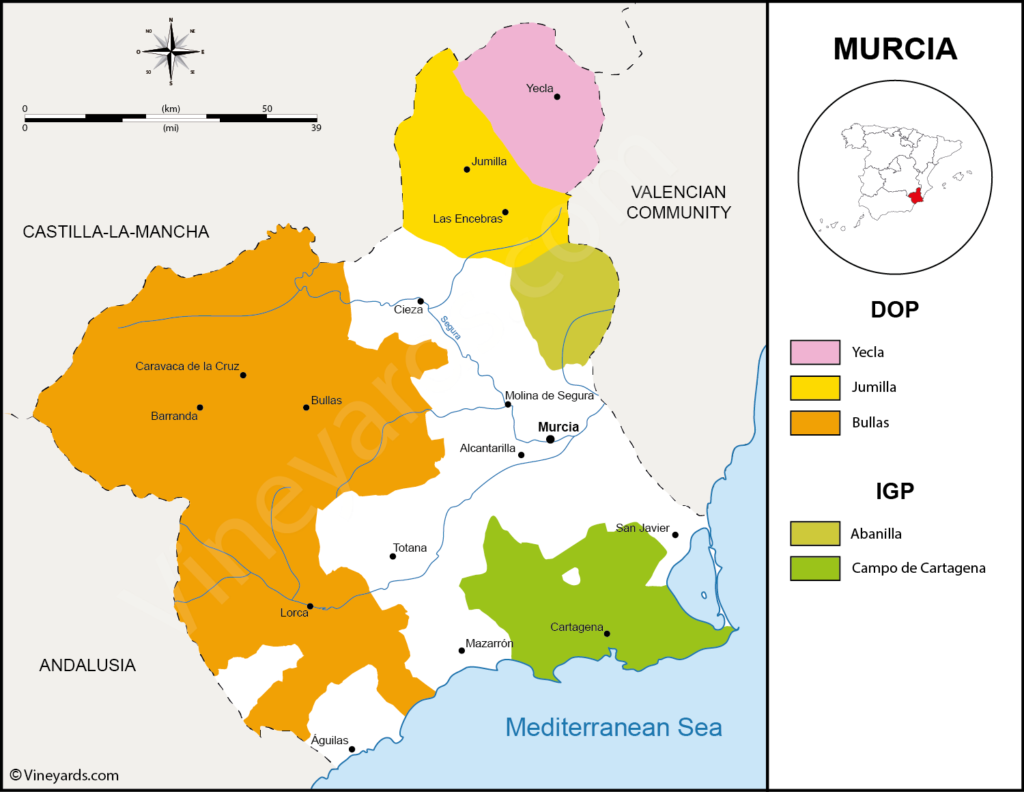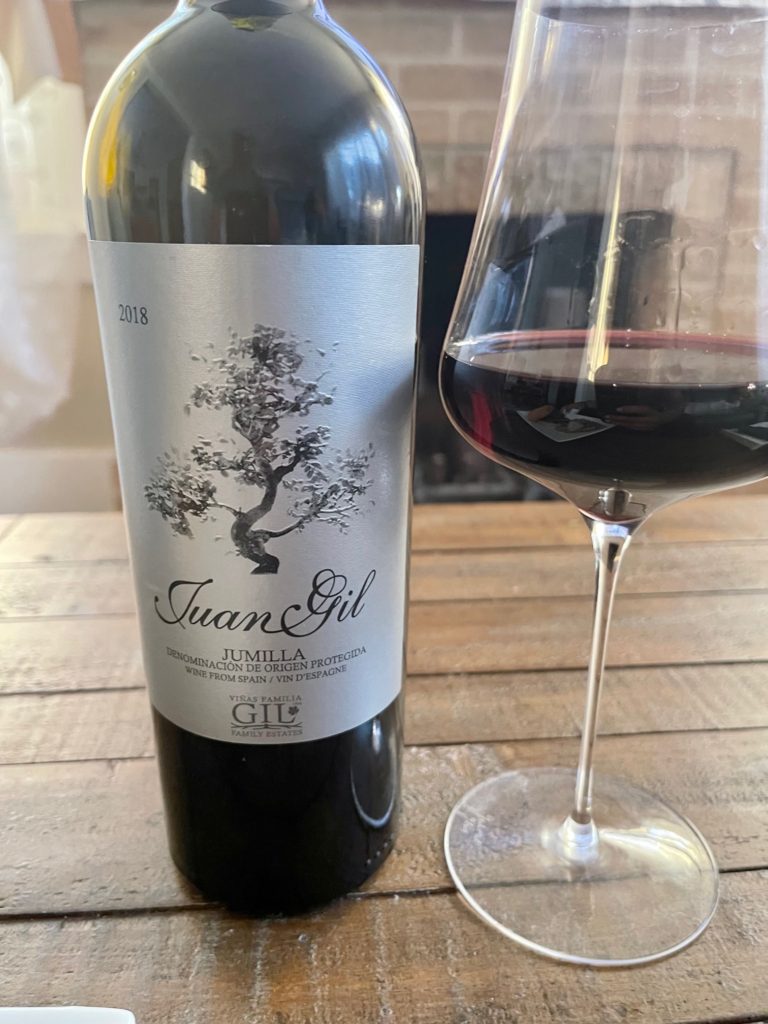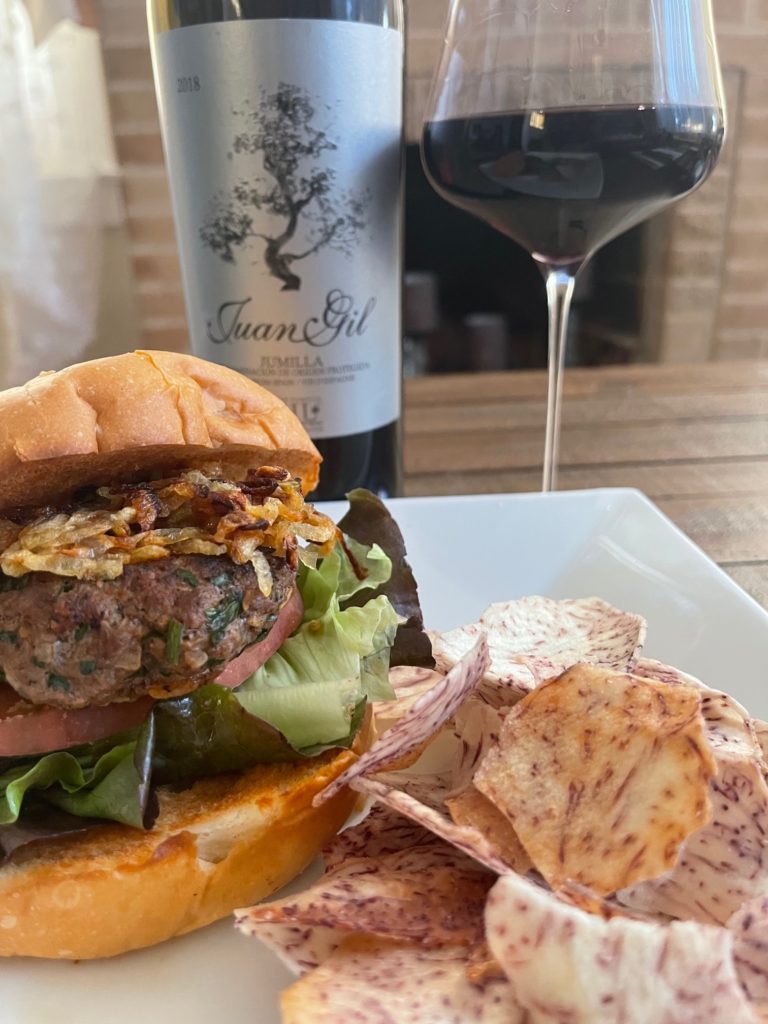This month the intrepid #WorldWineTravel group of bloggers continues its 2021 virtual exploration of Spain with a visit to Murcia and Valencia, a relatively unknown wine regions in south-eastern Spain.
I’m writing about a wine from the Jumilla (pronounced who-ME-ah), the most eminent of Murcia’s wine regions.
Murcia is bordered by Andalusia, Castilla-La Mancha, Valencia and to its south, the Mediterranean Sea.
As note in the map below, the region has three of the predominant DOPs (appellations) – Yecla, Jumilla , and Bullas, along with two lower quality classification IGP level zones.

About Jumilla
The Jumilla DOP, which takes its name from the town of Jumilla, is situated in the northern section of Murcia. It earned DO (now DOP) status in 1996, making it one of the oldest appellations in Spain.
The region is synonymous with the Monastrell grape variety, which is thought to have originated in medieval Morvedre (today’s Sagunto, Valencia). The name Monastrell suggests that monks may have cultivated and spread the variety. Archaeological evidence puts a semi-cultivated vine in Murcia some 5,000 years ago, actual cultivation in the Iberian period (5th-6th centuries BC), and larger scale development by the Romans explains Food and Wines of Spain.
A late-ripening grape, Monastrell is the third most planted grape variety in Spain. The grape thrives in the region’s continental climate (hot and dry in the summer; cold in the winter), and predominantly limestone soils. Many of the regions vineyards are planted on their own rootstock because the phylloxera surge of the 19th century didn’t destroy its vineyards. Approximately 80% of Jumilla’s vineyards are planted to Monastrell (Note: In other parts of the world it’s called Mourvèdre, or Mataro).
In the late 20th century, investments in new equipment, better farming, and better winemaking saw the region transition from a reputation for oceans of bulk wine to its current reputation for producing fine wine.
According to Decanter , “organic viticulture thrives here –in fact, in Jumilla town over 94% of the grapes are organic”.
2018 Bodegas Juan Gil Silver Label
The origins of Bodegas Juan Gil date from 1916 when Juan Gil Gimènez founded the eponymous winery. His son, Juan Gil Guerrero, dedicated his entire life to the wine business, but it was the third generation, Juan Gil Gonzalez, together with his brother Paco, elevated the quality and reputation of the winery.
They farm approximately 300 acres surrounding the winery, along with scattered parcels they have acquired over the years.
Fruit for this wine is sourced from low-yielding, dry-farmed old vines planted on limestone soils. 2018 was the first certified organic vintage. It was pressed to, and fermented in temperature controlled stainless steel tanks and matured in toasted French oak barrels for approximately 12 months.

Tasting Note:
Translucent carmine color with dark fruit and cedar aromas with hints of chocolate, smoke and whiff of heat. On the palate, it’s medium-bodied with juicy acidity and fine grained well-integrated tannins with ample, mouth-coating blackberry, black cherry, boysenberry, and dark chocolate flavors with a satisfying finish. 15% abv| SRP – $14. Fantastic QPR on this wine!
It was fantastic paired this with Bison Burgers with Sauteed Onion and side of Terra Taro + Sea Salt Chips

Looking for more about the Murcia and Valencia wine regions? Check out what my fellow writer discovered during their virtual visit to the regions:
- Monastrell from Murcia and Valencia Paired with Lamb-Beef Burgers and El Taberno from Gwendolyn Alley at Wine Predator……Gwendolyn Alley
- Getting to Know the Grape Known in Spain as Monastrell from Linda Whipple at My Full Wine Glass.
- Rosados from Jumilla from Susannah Gold on Avvinare.
- Valencia Inspires My First Paella from Jeff Burrows at Food Wine Click!
- Light up the Grill and Open that Bottle of Jumilla Wine from Wendy Klik at A Day in the Life on the Farm.
- To Valencia with Sobrasada, Other Spanish Nibbles, and Enrique Mendoza Alicante La Tremenda Monastrell 2018 from Camilla Mann at Culinary Adventures with Camilla.
- Muscatel Sparkling Joy by 103-Year-Old Bodegas Reymos – First Wine Cooperative in Valencia, Spain from Pinny Tam at Chinese Food & Wine Pairings.
- Coca am Recapte and Chopo Jumilla Monastrell Rose on a Summer’s Day by Terri Steffes at Our Good Life
- 2018 Bodegas Juan Gil Jumilla + Bison Burgers by Martin Redmond at ENOFYLZ Wine Blog
- On Monastrell, Three Wines from D.O. Jumilla and Foods for Pairing by Cindy Rynning at Grape Experiences.
We’ll be chatting about the Wines of Murcia and Valencia live on Twitter on Saturday, August 28 at 11am Eastern/8am Pacific. Join the conversation by following and using the #WorldWineTravel hashtag.
Related Articles You May Be Interested In:
Our previous virtual visits so far this year included (click on link for my posts):
- January; La Rioja
- February; Catalunya-Penedes-Cava-Priorat-Monstant
- March; Castilla y Leon-Ribera del Duero, Rueda, Toro
- April; Galicia-Rias Baixas
- May; Cariñena
- Jun; Basque Country
- July; Spanish Cider from Asturias
We’ve had this wine often and are always blown away by the value. However, we haven’t been smart enough to pair with Bison burgers…THAT looks amazing!
Perfect wine for a burger, plus those onions on top…
Thanks Jeff!
Your wine sounds like a great value and that bison burger has my mouth watering.
Thanks Wendy, the Bison burger recipe was very good! Might be eating more Bison Burgers!
I am ordering this now! And, I grew up with bison burgers at the Fair, so I am going to do that too. Yum.
Thanks Terri, it’s a wonderful bottle for the price. I think it’s available at Total Wine for less than $14
I have had that bottle! Now I just need the bison burgers to pair. Genius, Martin.
Thanks Cam. Was telling my wife the next time, I make I’d probably go with 1/3 lb instead of 1/4 lb patties…mostly because I love Semifreddi’s “Ultimate” Burger Bun, and the burger would fit better.
Thanks Cam. It’s a popular bottle for good reason!
Interesting bit of history – and those burgers! I like how the old world wine and new world food complement one another.
Thanks Linda!